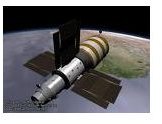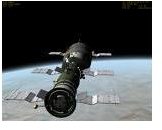The History of the Soviet Space Program – Part III – The Seventies
Introduction
After several successful launches of the Voskhod spaceships, a new phase of the Russian space program was under way. The “Soyuz” series (meaning Unity-and also the first S in the SSSR (USSR)) was destined to land the first man on the Moon; however, the Americans got there first, so the idea was abandoned and a new task was set – construct a Space station, rather than a spaceship.
The Salyut Project - Space Station
Salyut, which means “fireworks” in Russian, was the name of the Russian space station project. The first Salyut was put into orbit by the “Proton-K” rocket, 19 April 1971. In three days, the spaceship “Soyuz-10,” carrying three cosmonauts, was docked to the station. The connection was not complete, though, and the transfer into the Salyut was not possible. Even more tragic was the Soyuz-11 docking. Although the crew successfully entered the station, during the landing phase chamber decompression occurred, and all three cosmonauts were killed. After 175 days the first Salyut crashed into the Atlantic Ocean.
The Salyut project continued, with more failures, including a failed launch, the loss of control of Salyut 2 on the 13th day after reaching orbit, and then, a week after the Americans launched the Skylab, another launch (Cosmos-557) and immediate loss of control.
Salyut Space Stations


The Almaz Project
The ministry of defense was presented with a report, which said that the Americans had the ability for a Nuclear strike from space – with the aid of Skylab. Because of this, the Almaz (Diamond) program was accelerated (Slayut-2 was a part of the project), under the supervision of Vldimir Chalomei, and in June of 1974, Slayut-3 was finally in orbit. There are rumors that the Almaz stations were equipped not only with high-resolution cameras but also with ammunition “to prevent enemy (US) orbital attacks). The station served until January 1975.
Later that year, the Russians put another space station into orbit – Salyut-4. This one was to last more than 2 years and was visited twice. Meanwhile, the Almaz project continued – a “military” space station called Salyut-5, working for over a year and visited by two expeditions, the first crew working aboard the station for 48 days.
Success at Last
It seemed the Soviets had finally mastered space station technology; Salyut-6 and Salyut-7 were big successes, serving 5 and 9 years, respectively. Although the Soyuz ships were designed to stay only 120 days in space, the missions were much longer, with the use of Space Stations. Salyut had two docking points, so the each expedition “arrived” with one spaceship and returned with another, which had been left by its predecessors. In 1986, with Salyut-7 still in orbit, Salyut-8 station was launched. It is known to us as the MIR (World) station – intended to provide continuous stay in space for Soviets and, since 1995, other astronauts. Read more about MIR in the next article!
References
Content:
Wikipedia articles (Russian) - Almaz,, space stations
Images:
djvader.blogspot.com/2006_11_01_archive.html
This post is part of the series: Soviet/Russian Space Program - a Review
This series reviews the development and advances of space technology and programs by the former Soviet Union and Russia.
